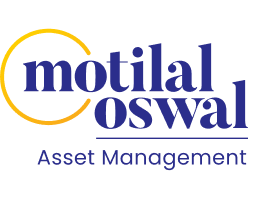The struggle to achieve independence and eventually to become an independent nation is possibly the biggest milestones in Indian history. Countless information, oral and written can describe the events that took place during the course of the Indian independence movement. While we can always draw inspiration from the struggle and be proud of being a citizen of this great nation; we can also learn lessons on personal finance from the Indian independence movement.
Read 5 Key investment lessons from the struggle of independence here;
Intent is greater than extent

The movement took birth from the ideology of passionate and committed revolutionaries who wanted to acquire independence from the then ruling East India Company. These revolutionaries, with meagre funds and resources managed to create a storm and paved the way towards achieve national independence; which eventually led to its freedom. Thinking on the same lines, you can also achieve financial independence if you have the intent invest irrespective of the amount you wish to start with. The very thought to start investing brings you a step closer to financial independence. If you choose Mutual Funds as our investment vehicle then you can begin investing with amount as low as Rs. 500/- and with time, increase the amount as well. What matters is the intention of beginning investments in Mutual Funds irrespective of the amount
A strong team for your investments to beam

If we look back at the days of struggle; many small parties, committees were founded with a common objective which led to the formation of one strong national party. The party was formed by a group of people and subsequently joined by more people, irrespective of the different ways they proposed to achieve their mission;– independent India. Similarly, be it direct equity investing or investing via equity Mutual Funds, what matters is the stocks we select or the scheme we choose to invest in. A good equity portfolio should consist of quality stocks that would help in the investments to generate better returns further letting you inch towards your financial goals. And while selecting a Mutual Fund scheme, the scheme objective should correspond with our financial objective as well
Commitment transforms dreams into reality

All those who participated in the Indian independence movement had sacrificed themselves in their entirety to give birth to a glorious nation. Many revolutionaries didn’t just face criticism or oppression but faced other daunting tasks on their route towards achieving freedom; but it was their passion, perseverance, patience and commitment that turned their dream of setting India free from colonial control. On a similar note; to watch our investments reach their true potential, we must stay committed and not deter. Nor should we let the commotion influence us from straying away from the path towards wealth creation and with the ray of hope and flame of perseverance; you can watch your financial dreams turn to reality
When the rest is manic, don’t panic

An important message that was disseminated during the movement was that of ‘Ahimsa’ or non-violence. The principles of non-violence encouraged everyone to participate peacefully in the freedom movement in their thoughts, speech and action as well. This would ensure composure and a sense of calm for any individual to think practically without losing sensibility and help in reaching their goals. Akin to this philosophy, if we maintain composure without panicking during a market correction or similar brouhaha orbiting the equity stock market
Careful plannning

To execute the different activities and agendas; party members carefully devised plans to achieve their mission. Every move they made had a purpose and was organized well. They analyzed the level of risk that was involved and how feasible was the plan. Similar is the case with managing finances or investments. It doesn’t just require patience, commitment, discipline or selecting a certain scheme; it also requires proper planning. This includes understanding your financial goals, whether or not they are realistic, assessing your investible surplus, risk profile and investment horizon












































